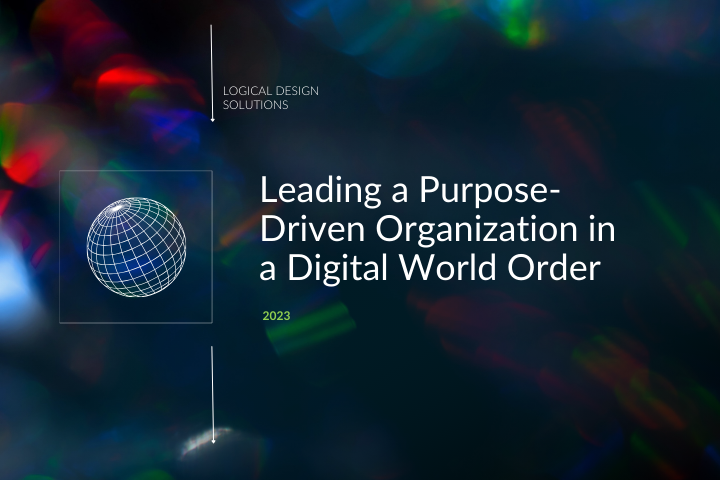3 min read
Revolutionizing the Workplace: The Power of Employee Engagement in the Digital Era
The world of work looks vastly different from what it did just a few years ago. Many employees have come to appreciate the benefits of a work-life...
2 min read
Logical Design Solutions
:
8/1/20 10:15 AM
Since the first generation of mobile networks began to emerge four decades ago, digital technologies have revolutionized user capabilities through ever expanding coverage, rates of data transfer, latency, connectivity on a massive scale, and improved wireless imaging and sensing. The next decade will see exponential change as the worker experience is unified across physical, digital, and biological worlds.

Less than a millisecond of response time
AI will drive billions of IoT devices
Fully ambient interfaces
Quantum computing becomes common
 2030
2030
 Shorter wavelengths will mean centimeter-level accuracy
Shorter wavelengths will mean centimeter-level accuracy
(e.g., workers will be able to locate and examine any object on the planet at data transfer rates up to 100x faster than 5G).
 Digital twins will facilitate remote training and maintenance
Digital twins will facilitate remote training and maintenance
(e.g., virtually replicating physical entities such as people, devices, systems, and even places)
 Intelligent machines will interface with other intelligent machines
Intelligent machines will interface with other intelligent machines
(e.g., machine vision will far surpass human capabilities, resulting in faster diagnosis and remediation of complex problems)
 Fully immersive XR will become commonplace
Fully immersive XR will become commonplace
(e.g., ambient interfaces for maintenance and guidance in areas such as healthcare, education, and manufacturing).
 Frequency of 30-300 GHZ means huge data downloads
Frequency of 30-300 GHZ means huge data downloads
All devices connected to one network (IoT)
Transportation, healthcare logistics, and retail are connected
Human-machine work is co-mingled
 2020
2020
 Enhanced collaboration for remote teams
Enhanced collaboration for remote teams
(e.g., real-time 3D holograms on a digital whiteboard)
 Automated inventory control
Automated inventory control
(e.g., shelf sensors use the high speed network to immediately trigger online reorders when stock is low)
 Streaming virtual and augmented reality apps for training
Streaming virtual and augmented reality apps for training
(e.g., real-time guided instructions on machine repairs)
 Exponential increase in connected devices
Exponential increase in connected devices
(e.g., 125 billion IoT devices capable of communicating real-time data)
 Amplified videoconferencing capabilities
Amplified videoconferencing capabilities
(e.g., meetings may include 3D Holographic images, avatars, and advanced AR/VR technologies)
 Expanded recruitment areas
Expanded recruitment areas
(e.g., highly qualified global labor pool with enhanced remote working capabilities)
 Enhanced machine learning and robotic capabilities
Enhanced machine learning and robotic capabilities
(e.g., self-driving cars utilizing the 5G network for real time updates on traffic conditions)

 2010
2010
 Up to 10 times faster than 3G
Up to 10 times faster than 3G
Mobile web access
High-definition mobile TV
Data rates as high as 1 gigabit per second

 2000
2000
 Mobile exceeds landline users
Mobile exceeds landline users
Apple iPhone changes the UX
Web browsing and video calls
Multiple users on one frequency
To this day, remains the largest global mobile network

 1991
1991
Digital
Send and receive SMS (1996)
Global System for Mobile (GSM)
Camera phone/emojis (2000)
Cheaper, lighter, smaller
.gif?width=237&height=98&name=doc-images%20(1).gif)
 1979
1979
Analog
Limited signal
Poor sound
Expensive ($4,000)
Heavy (6 lbs.)

3 min read
The world of work looks vastly different from what it did just a few years ago. Many employees have come to appreciate the benefits of a work-life...

3 min read
The past year saw a concerted effort across most industries to encourage resilience and support sustainable growth, as organizations recognized the...

Our Leading a Purpose-Driven Organization in a Digital World Order white paper explores the pressing challenges confronting business leaders during...